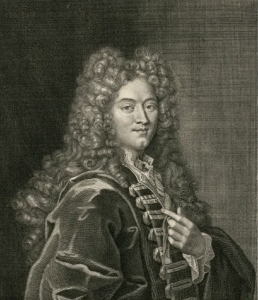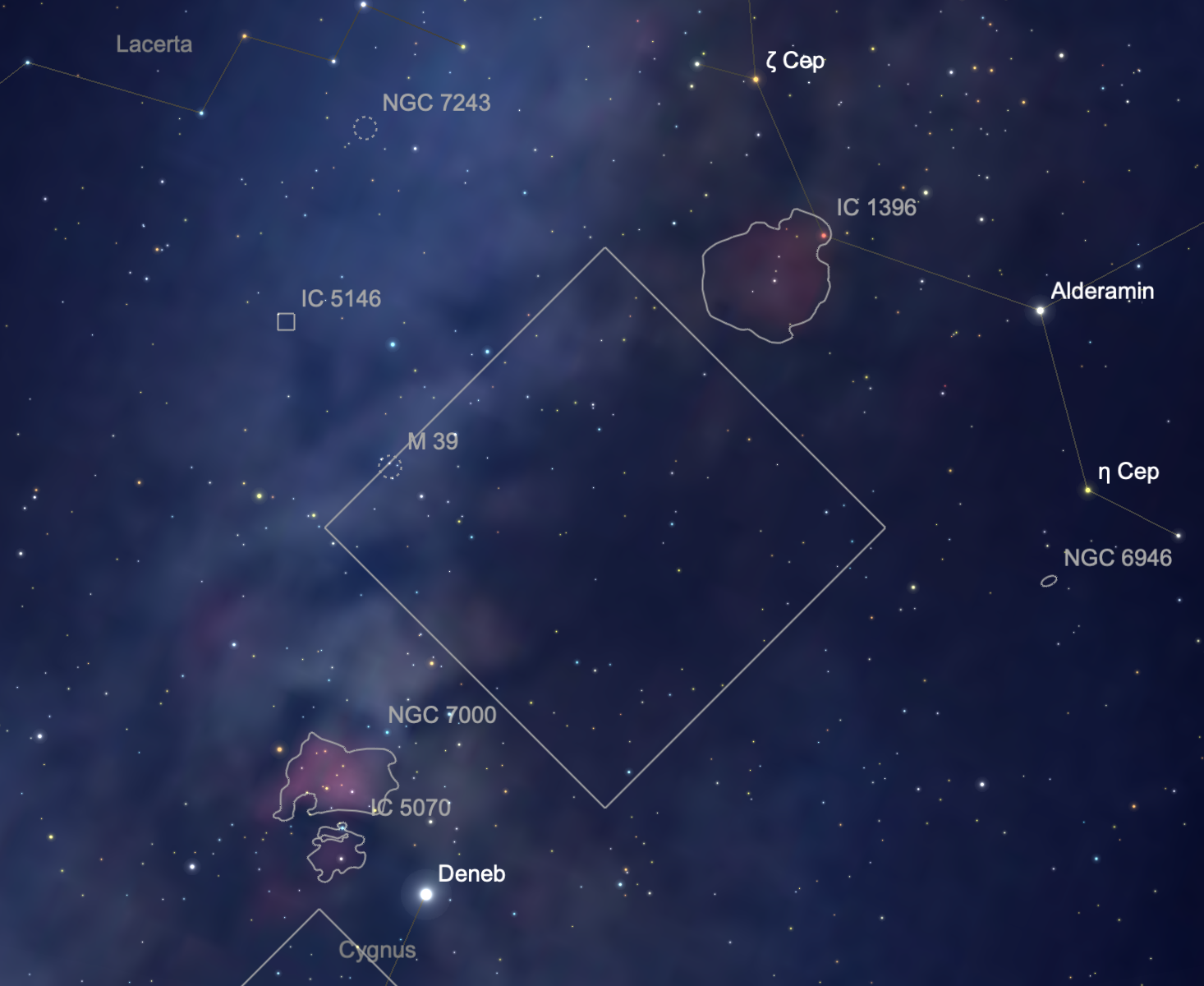
Every picture tells a story, and this wide-field image of the northern Milky Way in Cygnus and Cepheus, which spans nearly 16º on each edge, surely has a lot going on.
To the upper right of this image, you see the blossom-like emission nebula IC1396 in Cepheus with the aging red-orange star μ Cephei, the ‘Garnet Star’, on its limb. Plenty of stars are forming within this stellar nursery.
At the upper left, you see the tiny blossom of the Cocoon Nebula (IC 5146), another stellar nursery at the end of a two-degree-long dark nebula Barnard 168, both set in a rich field of background stars.
Moving down the left side of the image you see more nebulosity culminating in the unmistakable North America Nebula (NGC 7000) and the neighbouring Pelican Nebula (IC 5070) below, both of which encompass more active regions of star formation. Various patches of dark dust and distant star clouds, especially the square formation above NGC 7000 also lie within this wide view, as does the bright star Deneb at the tail of Cygnus, the Swan.
But the showpiece of this image is notable for its lack of light. Just right and below centre you see the vast and irregular void of a cloud of gas and interstellar dust known as Le Gentil 3 that comprises an immense conglomeration of star-making material in the early stages of giving birth to dozens of new star clusters.
Dark nebulae are often underappreciated by casual stargazers and imagers for the understandable reason it’s hard to see or photograph something that emits no visible light. They only stand out when they lie in the foreground of a dense and bright field of background stars, and Le Gentil 3 has the good fortune of finding itself set against one of the brightest patches of Milky Way in the northern sky. Its five-degree-wide span stands out easily to the unaided eye on a moon-free night away from city lights, more prominent than the Northern Coalsack dark nebula, which lies further southwest in Cygnus, for which it is often confused.
Le Gentil 3 is named after the 18th-century French astronomer Guilluame Le Gentil. A contemporary of Charles Messier, Le Gentil charted a handful of star clusters now listed on Messier’s famous list of ‘nebulous objects’. He first noted this dark nebula in 1749 and recorded in his journal that it “seems opaque and very dark.” I have no knowledge of what happened, if anything, to the objects Le Gentil 1 and 2.
But Le Gentil is most famous for his almost comically ill-fated expedition to observe the transit of Venus in 1761. Dispatched to Pondicherry, India, by the French Royal Academy of Science to observe the 1761 transit of Venus, Le Gentil endured delays from bad weather, the British, and just plain bad luck and was stuck on a ship at sea during the transit and unable to make useful measurements. Undeterred, he decided forgo a return to France to stay in and around the Indian Ocean for another eight years to observe the next transit. He mapped the coast of Madagascar and made other useful scientific observations to pass the years.

Before the next transit occurred in 1769, he attempted to observe the event from Manila but the Spanish refused to let him land. He returned to Pondicherry in 1768, once again under French control, built an observatory, and readied himself for the transit on June 4, 1769. But at the last minute, clouds rolled in and he missed it again (the next transit would not occur for 105 years). Driven almost to the point of a nervous breakdown, things got worse for poor Le Gentil. In trying to return home, he battled storms, hostile warships, and dysentery, finally arriving in 1771 to discover that none of his letters home over his long absence had been received and he was declared legally dead, his estate plundered, his wife remarried, and his position in the Academy given away. At last, an intervention by the king restored his position and Le Gentil continued with his scientific work.
And he had a great story to tell.
Lying at the western end of the recently discovered Radcliffe Wave, Le Gentil 3 is part of the larger molecular complex known as Cygnus OB7. It formed about 13 million years ago and contains interstellar dust, gas, molecules both simple and complex, and bright blue-white O and B-type stars hidden from view. Until about 60 years ago, many astrophysicists believed molecules could not form in the harsh environment of interstellar space. But the spectroscopic discovery of ammonia and water in interstellar clouds by Charles Townes and his collaborators in the late 1960s spawned the new field of astrochemistry which attempts to understand how the scant atoms in the rarefied expanse between the stars combine into hundreds of different type of molecules. Some interstellar molecules have two or three atoms. Some have many more including organic molecules such as acetone, acetic acid (vinegar), ethanol, and benzene. The carbon atoms at the heart of these molecules are ejected into space by dying stars casting off their outer layers. Much of interstellar dust is more akin to diesel smoke than icy dust granules.
Dark nebulae like Le Gentil 3 have a critical role in the ecology of the Milky Way Galaxy. These massive collections of gas and dust pull in more matter from expired stars and eventually form small pockets of star formation where new star clusters and nebulae form. Most of the atoms in your body were once floating in a dark nebula much like Le Gentil 3 long before our Sun coalesced. And when the Sun expires in 5 billion years and boils off the Earth’s oceans and atmosphere, if not the entire planet, many of your atoms will again find themselves in interstellar space, possibly on their way into another dark nebula in the distant future. Small beings like ourselves live and die, but our atoms live on for a very long time.

***
Editor’s Note – The above image of Le Gentil 3 is one of a series of wide-field images along the Milky Way that will be presented at CosmicPursuits.com that attempt to show various sights and features of the deep sky in context with each other and the galaxy itself. The stacked and tracked image was captured under moderately light-polluted suburban skies with relatively simple equipment, in this case a ZWO ASI533MC-Pro camera, a Voigtlander 40mm f/2 SLIIs camera lens, and an Optolong L-Enhance filter.
Share This: